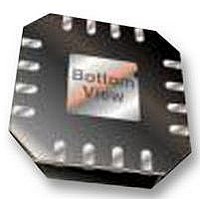AD7143ACPZ Analog Devices Inc, AD7143ACPZ Datasheet - Page 17

AD7143ACPZ
Manufacturer Part Number
AD7143ACPZ
Description
IC, CDC, 16BIT, SMD, LFCSP-16, 7143
Manufacturer
Analog Devices Inc
Datasheet
1.AD7143ACPZ.pdf
(56 pages)
Specifications of AD7143ACPZ
Supply Voltage Range
2.6V To 3.6V
Operating Temperature Range
-40°C To +85°C
Digital Ic Case Style
LFCSP
No. Of Pins
16
Svhc
No SVHC (18-Jun-2010)
Package / Case
LFCSP
Base Number
7143
Ic Function
Programmable Controller For Capacitance Touch Sensors
Rohs Compliant
Yes
Lead Free Status / RoHS Status
Lead free / RoHS Compliant
Available stocks
Company
Part Number
Manufacturer
Quantity
Price
Part Number:
AD7143ACPZ-1
Manufacturer:
ADI/亚德诺
Quantity:
20 000
Company:
Part Number:
AD7143ACPZ-1500RL7
Manufacturer:
NSC
Quantity:
654
Part Number:
AD7143ACPZ-1500RL7
Manufacturer:
ADI/亚德诺
Quantity:
20 000
NONCONTACT PROXIMITY DETECTION
The AD7143 internal signal processing continuously monitors
all capacitance sensors for noncontact proximity detection. This
feature provides the ability to detect when a user is approaching
a sensor, immediately disabling all internal calibration while the
AD7143 is automatically configured to detect a valid contact.
The proximity control register bits are described in Table 10.
FP_PROXIMITY_CNT register bits and LP_PROXIMITY
_CNT register bits control the length of the calibration disable
period after proximity is detected in full power and low power
modes. The calibration is disabled during this time and enabled
again at the end of this period if the user is no longer
approaching, or in contact with, the sensor. Figure 27 and Figure
28 show examples of how these registers are used to set the full
and low power mode calibration disable periods.
RECALIBRATION
In certain situations, the proximity flag can be set for a long
period, such as when a user hovers over a sensor for a long
time. The environmental calibration on the AD7143 is
suspended while the proximity is detected, but changes may
occur to the ambient capacitance level during the proximity
event. Even when the user has left the sensor untouched, the
proximity flag may still be set. This could occur if the user
interaction creates some moisture on the sensor causing the
new sensor value to be different from the expected value. In this
case, the AD7143 automatically forces an internal recalibration.
This ensures that the ambient values are recalibrated, regardless
of how long the user hovers over a sensor.
The AD7143 recalibrates automatically when the measured CDC value
exceeds the stored ambient value by an amount determined by
PROXIMITY_RECAL_LVL, for a set period know as the
recalibration timeout. In full power mode, the recalibration
Table 10. Proximity Control Registers (See Figure 31)
Register
FP_PROXIMITY_CNT
LP_PROXIMITY_CNT
FP_PROXIMITY_RECAL
LP_PROXIMITY_RECAL
PROXIMITY_RECAL_LVL
PROXIMITY_DETECTION_RATE
(FP_PROXIMITY_CNT × 16 × Time for one conversion
sequence in full power mode)
(LP_PROXIMITY_CNT × 4 × Time for one conversion
sequence in low power mode)
Calibration disable period in full power mode =
Calibration disable period in low power mode =
Length
4 bits
4 bits
8 bits
6 bits
8 bits
6 bits
Register Address
0x002 [7:4]
0x002 [11:8]
0x004 [9:0]
0x004 [15:10]
0x003 [13:8]
0x003 [7:0]
Rev. 0 | Page 17 of 56
timeout is controlled by FP_PROXIMITY_RECAL and in low
power mode, it is controlled by LP_PROXMTY_RECAL.
Figure 29 and Figure 30 show examples of using the
FP_PROXIMITY_RECAL and LP_PROXIMITY_RECAL
register bits to force a recalibration while operating in the full
and low power modes. These figures show the result of a user
approaching a sensor then leaving the sensor while the
proximity detection remains active after the user discontinues
contact with the sensor. This situation could occur if the user
interaction created some moisture on the sensor causing the
new sensor value to be different from the expected value. In this
case, the internal recalibration is applied to automatically
recalibrate the sensor. The forced recalibration event takes two
interrupt cycles; therefore, it should not be set again during this
interval.
PROXIMITY SENSITIVITY
The fast filter in Figure 31 is used to detect when some one is in
close proximity to the sensor. Two conditions set the internal
proximity detection signal using Comparator 1 and Comparator 2.
Comparator 1 detects when a user is approaching a sensor.
The PROXIMITY_DETECTION_RATE register controls the
sensitivity of Comparator 1. Consider, for example, if the
PROXIMITY_DETECTION_RATE is set to 4, the Proximity 1
signal is set when the absolute difference between WORD1 and
WORD3 exceeds four LSB codes.
Comparator 2 detects when a user hovers over a sensor or
approaches a sensor very slowly. The PROXIMITY_RECAL_LVL
register (Address 0x003) controls the sensitivity of Comparator 2.
For example, if PROXIMITY_RECAL_LVL is set to 75, the
Proximity 2 signal is set when the absolute difference between
the fast filter average value and the ambient value exceeds 75
LSB codes.
Recalibration timeout in full power mode =
FP_PROXIMITY_RECAL × Time for one conversion
sequence in full power mode
Recalibration timeout in low power mode =
LP_PROXIMITY_RECAL × Time taken for one conversion
sequence in low power mode
Description
Calibration disable time in full power mode
Calibration disable time in low power mode
Full power mode proximity recalibration control
Low power mode proximity recalibration control
Proximity recalibration level
Proximity detection rate
AD7143













